24th June 2020
Addiction Treatment Trends: 3 Alternatives Driving Change
Addiction treatment trends are constantly evolving. As we deepen our understanding of neurological processes in general, and the addicted mind in particular, we discover more effective ways of dealing with addiction and helping the addicted in their recovery journey. From the 12 Step Program to the Johnson Intervention to Methadone and Suboxone, new treatments have always grown out of medical and scientific innovations. And today there are treatments that show incredible promise ready to burst into the mainstream. As neuroscientists and neuropsychologists unearth new data, the way we understand addiction is changing, and the treatments which are leaping to the forefront are those that help to heal the minds of addicts.
Addiction treatment trends are constantly evolving. As we deepen our understanding of neurological processes in general, and the addicted mind in particular, we discover more effective ways of dealing with addiction and helping the addicted in their recovery journey. From the 12 Step Program to the Johnson Intervention to Methadone and Suboxone, new treatments have always grown out of medical and scientific innovations. And today there are treatments that show incredible promise ready to burst into the mainstream. As neuroscientists and neuropsychologists unearth new data, the way we understand addiction is changing, and the treatments which are leaping to the forefront are those that help to heal the minds of addicts.
NAD+
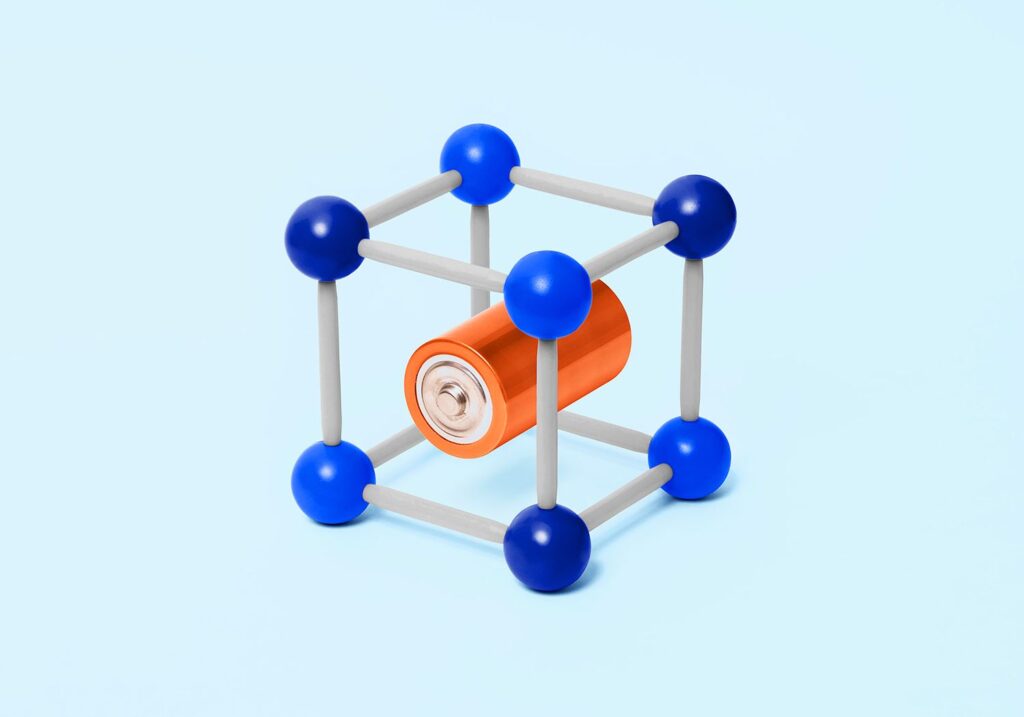
Addiction Treatment Trends: 3 Alternatives driving change
NAD+ is a naturally occurring co-enzyme of niacin which has shown immense promise as a treatment for substance abuse disorders, as well as many of the symptoms of aging. Studies have shown that addicts generally have very low levels of NAD+ in their systems, and many of the physical and mental disorders that frequently co-occur with addiction have been proven to deplete the body’s store of this essential nutrient. Proponents of the treatment tout its ability to restore the balance of neurotransmitters, which is disrupted by the process of withdrawal, decreasing withdrawal symptoms and cravings.
NAD+ was first used as a treatment for alcoholism in South Africa in the 1960s, and it came to the notice of Bill Wilson, one of the co-founders of Alcoholics Anonymous, who experimented with taking 3000 mg of niacin daily, and found it immensely helpful. He even wrote a pamphlet promoting it as a cure for alcoholism. In spite of this, its use never became widespread, and the first NAD+ treatment center in the US, the Springfield Wellness Center, wasn’t opened until 2001. The facility was opened by Psychotherapist Paula Mestayer and her Psychiatrist husband Richard. Since opening, they’ve successfully treated thousands of patients. Dr. Mestayer feels that the treatment is most successful when used as a “maintenance”, and finds that many clients come back for booster doses. She also notes that NAD+ treatment is particularly effective when dealing with alcoholism and opiate addiction.
NAD+ works in theory because it creates “neuroplasticity”, the brain’s ability to create new neural pathways and heal itself. Years of addiction condition the brain to release dopamine when given substances of abuse, and to respond to stress, pain, and anxiety by treating them with drugs and alcohol. NAD+ can help to change the structure of the brain, offering addicts the chance to gain pleasure from activities other than substance abuse and to find new ways to cope with the stresses of life.
For a more in-depth article on NAD+, click here.
Iboga

Iboga
If you’ve kept up with our blog, you already know about Iboga’s uncanny ability to treat withdrawal symptoms and substance cravings, as well as its ability to reset dopamine receptors in the brain to a pre-addicted state. If you haven’t, we’d recommend checking out this post on Iboga’s efficacy for treating opioid addiction. In addition to its treatment benefits, the substance induces an egoless, reflective state that can also help addicts confront and overcome past trauma and certain mental health issues.
Furthermore, Iboga is not habit-forming and is unlikely to be abused. There is no evidence that it is physiologically or psychologically addictive. As one user described the experience: “I wouldn’t recommend it to somebody who is trying to have fun. If you want your body to explode into 1000 pieces and then rebuild itself, then yeah. But don’t expect it to be pleasant.” While there have been no systematic, controlled clinical trials in the US or Europe (mainly because the substance is classified as a Schedule I drug), there are thousands of testimonials from people who credit the substance with saving their lives and allowing for them to recover from the nightmare of addiction.
Iboga use is not without risk. It can be deadly for those with pre-existing cardiac conditions, and in absolutely massive doses it may induce seizures. But even though it is often self-administered, or used without medical supervision in unsafe settings due to its murky legal status, it is still safer than methadone, causing 1 death in every 427 treatment episodes, compared to a 1:364 mortality rate for methadone. Click this link for more on the risks and safety precautions that are too often ignored by irresponsible treatment providers. And if you’d like to know more about iboga treatment, we’re happy to answer your questions.
Getting Holistic
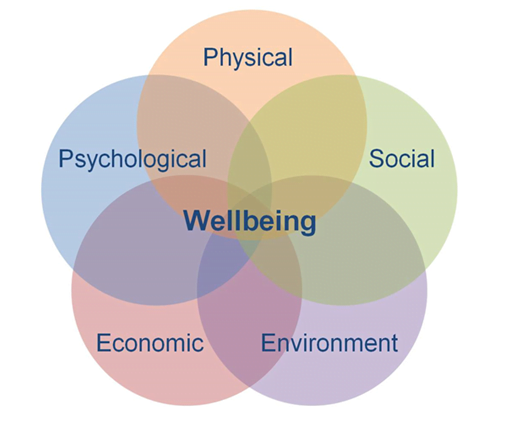
Getting Holistic
Addiction recovery, like cancer recovery, comes with a chance of relapse. And while treatments that deal with cravings and withdrawals are a wonderful tool you can use to heal yourself, dealing with the underlying causes of addiction, whether physical pain, mental trauma, depression, anxiety, or PTSD, is the only way to truly heal yourself. This is why the American Addiction Centers’ resource guide lists a host of techniques that can help lead you into a healthy new life, including equine therapy, biofeedback, yoga, and mindfulness training. As they write, holistic therapies “offer a more comprehensive approach” that heals on “mental, emotional, physical, and spiritual” levels, “increasing the chances for success and reduc[ing] the risk of relapse.”
At Iboga Tree Healing House, we are firmly convinced that holistic treatments are immensely valuable in the weeks, months, and years following inpatient treatment. Addiction batters the body as well as the mind, and in recovery, you have a wonderful opportunity to restore yourself to health and happiness. Kundalini yoga has a host of benefits for those in recovery, connecting body and mind, building strength, discipline, and will-power, and promoting spirituality. Mindfulness practice has been proven to have a plethora of benefits for your mental health and will help you rebuild connections with others that have become frayed or broken while you were addicted. Many other holistic treatments can help you on your journey through recovery, whether it’s art therapy for past trauma or nutrition therapy for rebuilding your body’s strength. At Iboga Tree Healing House we are committed to offering a wide range of holistic therapies to our clients!
Moving Forward Together
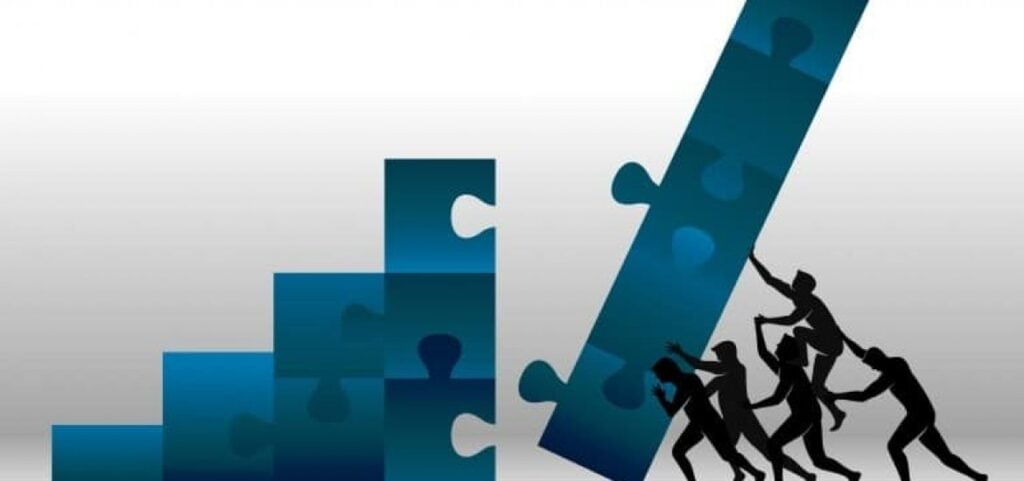
Moving Forward Together
As the opioid epidemic rages on, we need to continue to refine and develop treatments that work in order to win the battle against addiction. Traditional treatment modalities have worked for millions, but they’ve also allowed millions of others to slip through the cracks. We have discovered promising new ways to treat this devastating and debilitating disease, and we should use them to free those trapped in addiction.
31st March 2020 • Sticky Post
Eating Disorder Treatment: How Can Iboga Help You?
Most discussions of eating disorders tend to focus on positive and negative body images, the fashion industry, and an obsession with weight loss. But the renowned physician Dr. Gabor Mate would argue that eating disorders fall into the realm of addiction. As he puts it; “I have never met an anorexic or bulimic who was not a traumatized person…a person who is desperately trying to exert some control over themselves.”
Are Eating Disorders an Addiction?
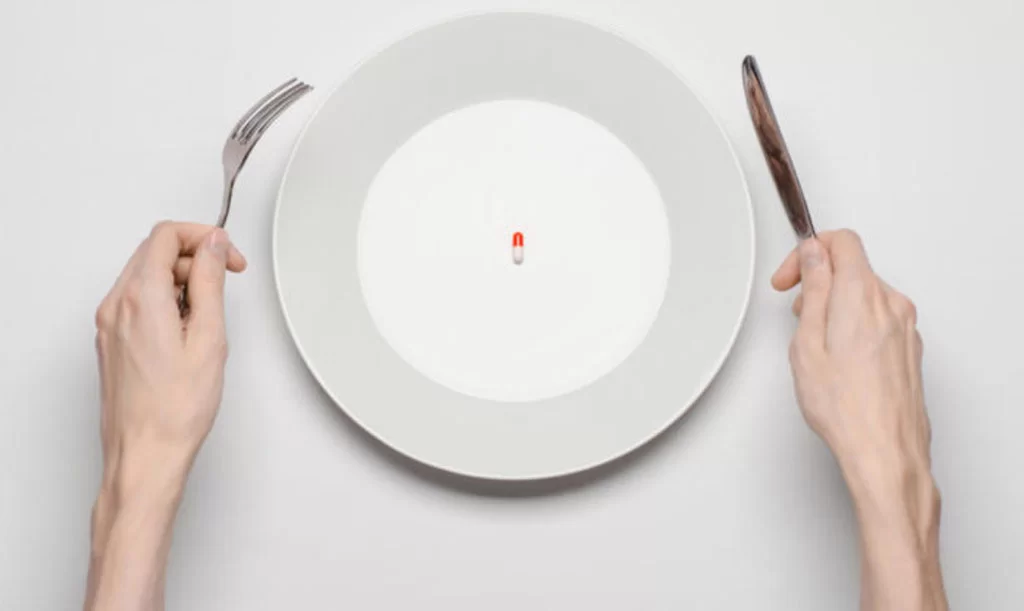
Dr. Mate’s fascinating philosophy of addiction posits that all addictions have their roots in early childhood experience, as our nervous and hormonal systems find ways to adapt to stress, wiring our brains’ developing systems of desire and reward in certain specific ways. Those with eating disorders are seeking either a sense of pleasure or an escape from inner pain through their relationship with food, in the same manner, and with the same mental processes and responses as a heroin addict seeks release through the drug. For more detail on Dr. Mate’s beliefs on emotional eating and addiction, we recommend this lecture.
If we accept that eating disorders are an addiction, we need to view their treatment through a different lens. The addicted brain has significant differences in its circuitry than a healthy brain. The systems which regulate the production of dopamine, a neurotransmitter that controls the body’s reward system, essentially stop producing pleasure except when triggered by the addictive substance. As our understanding of neurology has grown, we have learned that addiction hardwires certain behaviors into our minds. The addicted brain develops different responses to stress, anxiety, and substances of abuse than the healthy brain. The neurotransmitters and receptors which govern pain and pleasure take proteins from other neurons to create pathways that respond only to the presence or absence of a drug. Scientific studies have shown abnormalities in the neural processes of anorexics that aren’t dissimilar to addiction. And like addicts, those suffering from anorexia demonstrate an inability to alter their eating habits, even after expressing the desire to change.
American Addiction Centers uses the analogy of a hiking trail to explain the concepts of neural pathways and neuroplasticity: “ brains form neural pathways in a way that is similar to the formation of a well-traveled hiking trail. The more we travel a path, the faster, easier, and more familiar that path becomes. As we travel it more and more, it becomes wider, smoother, and easier to travel. It becomes a preferred route.” We can expand on this analogy in regard to the recovery process. As you learn to live a healthy life, you are essentially carving out a new path in a dense forest. The going will be slow, and the work will be hard, but each time your brain returns to this new trail, the journey will be smoother than the previous one. Every decision which supports your new lifestyle will be easier than the one before. Battling addiction is never easy, and it requires tremendous effort and strength, but promising alternative treatments can give you the push you need to start blazing a new trail!
How Iboga Can Help
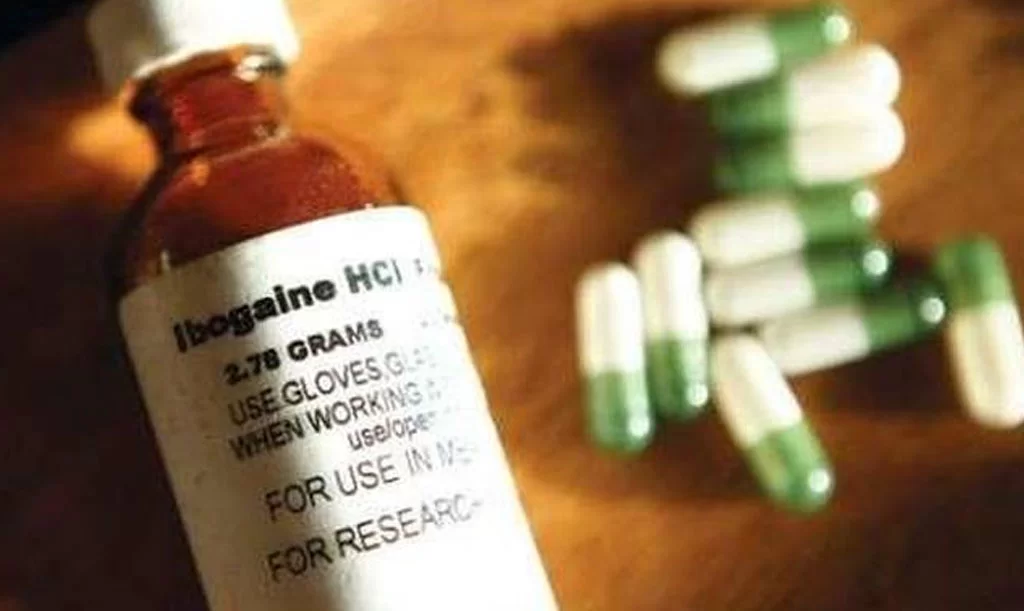
Iboga is a powerful, oneirogenic (meaning that it produces a waking dream state), plant-based medicine. It comes from the tabernanthe iboga plant which grows in West Africa and is an essential part of that region’s Bwiti spiritual traditions. Iboga has shown great promise in treating addiction and chemical dependence because of its ability to counter the withdrawal symptoms and cravings of heroin and opioid addiction with a single dose. But its benefits aren’t limited to those battling substance abuse.
Iboga has been proven to increase levels of GDNF, a protein that is produced by the brain in early childhood. GDNF is a fundamentally important protein for personal development because it rapidly increases the production of new neurons and allows for increased neuroplasticity. This is why childhood is the best time for people to learn new languages, figure out how to play musical instruments, and experiment with new habits and ideas. GDNF also helps to regulate responses to drugs of abuse and dopamine receptors in the brain and is extremely beneficial for creating and sustaining new habits and patterns of decision making and behavior.
For those suffering from eating disorders, GDNF has the potential to dramatically impact treatment outcomes. Its ability to create new ways of looking at the world, and neural pathways which respond to stress, pain, control, and pleasure in different ways can make all the difference in developing a healthy relationship with food, and escaping the cycle of emotional eating.
Next steps

Iboga isn’t a miracle cure for eating disorders or drug abuse, but the 3-6 month window following treatment offers you a window of time in which you will see the world differently, and gain the ability to develop healthy new habits. The way you think about life and analyze your environment will change perceptibly, and you’ll be receptive to changes and ideas that could literally save your life! At Iboga Tree Healing House, we’re committed to exploring the potential of ibogaine to reclaim lives devastated by eating disorders, and if you have any questions, we’d be more than happy to discuss them with you!
18th February 2020 • Sticky Post
Finding The Right Iboga Treatment Program: 5 Important Tips
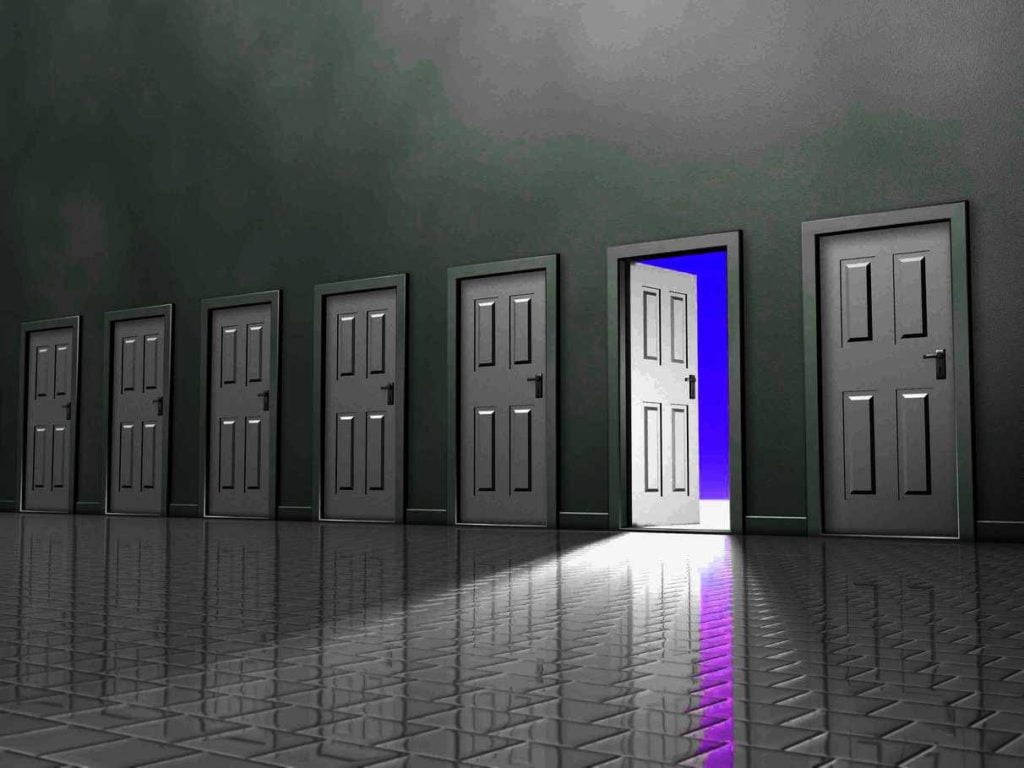
Finding The Right Iboga Treatment Program
So you’ve heard a lot about what iboga treatment is capable of doing to interrupt addiction, allow individuals to face trauma, or facilitate spiritual growth. You’ve poked around the internet to find out how iboga treatment works, and you’ve seen testimonials from people who’ve transformed their lives with the help of this powerful substance. You’re ready to take the plunge, and it’s time to find the iboga treatment program that will guide you through this life-changing experience. Today, we’ll give you five tips to find a program that meets your unique, individual needs.
1) Safety is Paramount
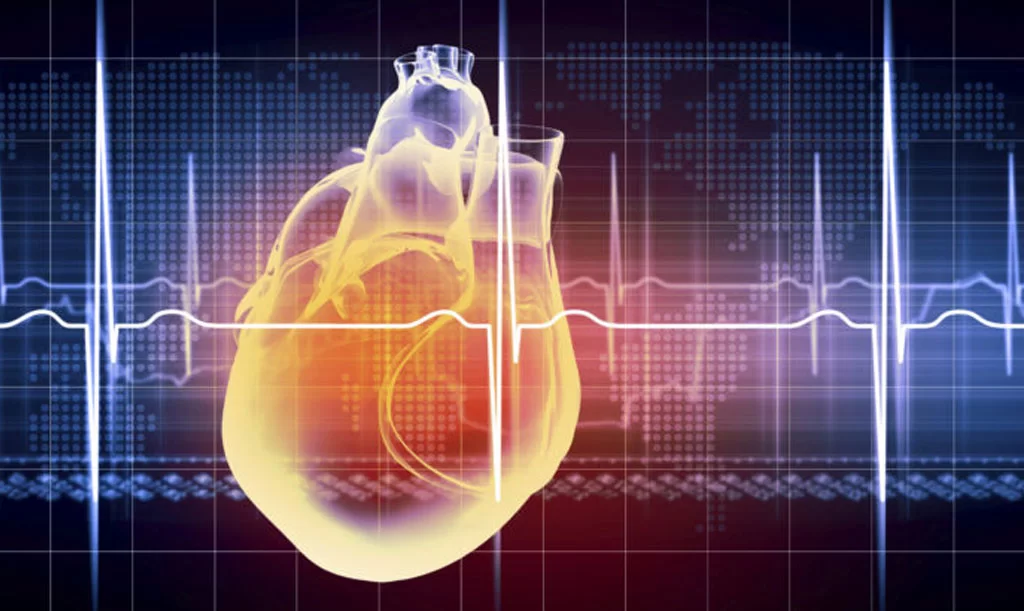
We have written extensively about the need for medical supervision and responsible use of iboga because we care passionately about it. Iboga is an extremely powerful substance, and we simply cannot overstate the importance of choosing a treatment center that takes the necessary precautions to keep you healthy and safe. This means that a clinic should be asking you for a detailed medical and psychiatric history. They should know what substances you’ve been using, how much you’ve been using, and for how long. They should take a full blood panel, and perform tests to ensure that your heart, liver, and kidneys are functioning properly. They should have a detailed emergency plan in place. Their staff should have medical training, and they should have a doctor on staff.
The Global Ibogaine Therapy Alliance has a lot of information on the safety of iboga use, and they offer a list of guidelines for clinical use. We would strongly recommend making sure that whatever iboga treatment program you choose follows these procedures. Any clinic that is willing to put your well-being at risk by ignoring established clinical guidelines doesn’t deserve your trust or your business!
2) Keeping it Legal
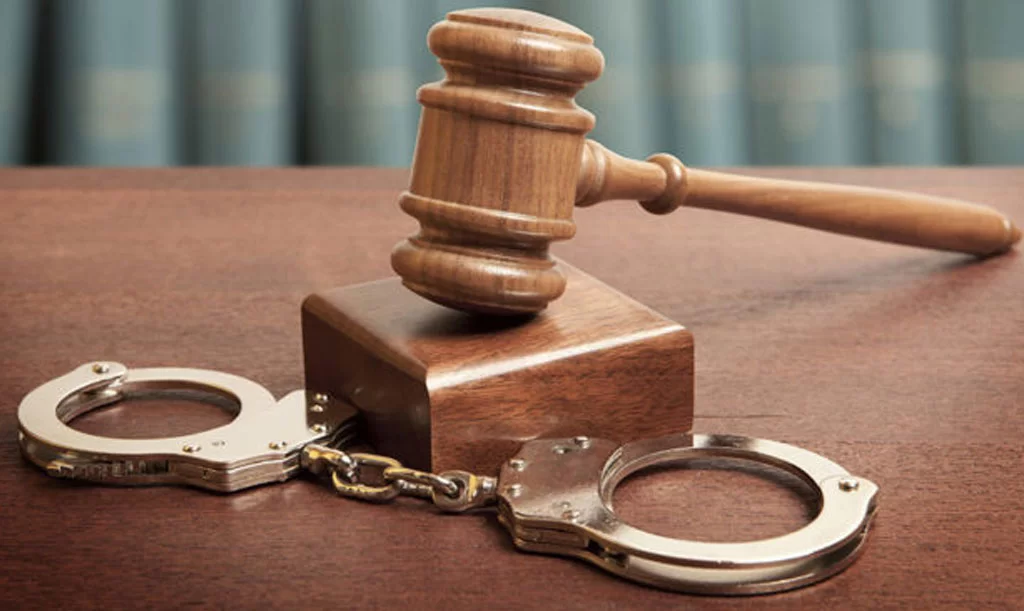
Iboga is a psychoactive substance, and as a result, it is illegal in many jurisdictions where it is wrongly regarded as a drug with potential for abuse. If you’ve decided that you want to free yourself from addiction and start a healthy and productive future, the last thing you want is to risk possible prosecution and incarceration. Iboga treatment is completely illegal in a number of countries, including the USA, France, Italy, and the UK. We would strongly recommend that you seek treatment in a country where clinics are free to operate, as you will almost certainly receive a higher level of care, from professionals rather than amateurs operating in a black market. It is also worth considering that a treatment center which is operating illegally might be reluctant to call an ambulance or rush you to a hospital should something go awry during your ibogaine treatment experience.
3) What else is on offer?

If you’re using iboga to break free from addiction to a substance of abuse, you’ll have a window of approximately 6 months of freedom from cravings. If you’re using iboga to treat mental illness or pursue personal growth, iboga’s effects on your central nervous system will be most pronounced in the period immediately following treatment. In both cases, you have a crucial window of time following your iboga experience where your mind and body will be extremely receptive to making positive changes and developing healthy habits.
Therefore, you need to find a treatment center that allows you to hit the ground running when iboga’s effects wear off. If you want to focus on traditional drug counseling, talk therapy, or CBT, find a center that provides those options. If you think yoga, mindfulness training, or art therapy would work better for you, explore treatment centers that offer alternative treatment modalities. You are the only person who knows the type of future you hope to build for yourself. You know what therapies you will respond to. Explore your own motivations, desires and needs, then look for an iboga provider who can give you what you need.
4) Environment is Everything

Your iboga experience will be an incredibly intense 8-12 hour journey through your past, your subconscious, and your deepest self. You will probably find yourself face to face with traumatic experiences from your past, and with the reality of who you are and what your life has become. A great deal of your time pre-and post-treatment will be spent preparing yourself for this, and recovering from it, so it is essential to find a clinic that offers you a peaceful and relaxing environment, with all of the amenities you find essential for your comfort. A friendly staff, a clean room, exercise facilities, nutritious food, pools, hot tubs, privacy, and beautiful natural settings can ensure that you have a positive experience, as well as speeding up the recovery process and putting you in the right mindset for beginning your new life.
5) Aftercare Matters
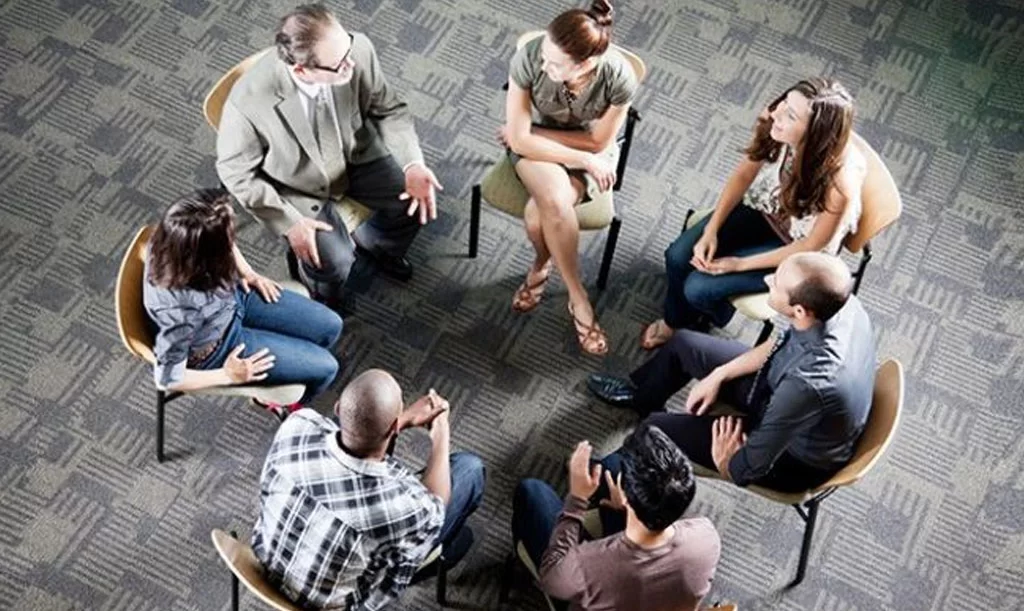
Creating and following a detailed plan for maintaining sobriety has been proven to profoundly affect treatment outcomes. Arming yourself with a solid plan for dealing with life after addiction will be a key factor in making iboga therapy work in the long-term. A center that can help you design and execute your blueprint for success, provide effective post-treatment aid and counselling, and help you make connections with the support network you’ll need to build a new life is a must. Whether you draw support from peers or professionals, you’ll find that fellowship makes you stronger, and we recommend that everyone join a peer support group, whether Smart Recovery, a traditional 12 Step Program, or another alternative. At Iboga Tree Healing House we also offer a weekly online aftercare program known as The IRM - Ibogaine Recovery Movement, which allows up to 8 former clients to meet once a week and share their experiences, trials, and triumphs. Those who have already undertaken the iboga journey will be able to offer you insights and advice that will prove invaluable.
Choose Wisely

If you’re going to use iboga, you are putting your life in the hands of the clinic you choose. No matter how desperate you are to get help with addiction or mental health issues, we implore you to put in the time and energy necessary for finding a responsible, professional clinic that meets your needs. If you have any questions about our methods, facilities, or programs, don’t hesitate to get in touch today!
4th February 2020
Iboga Safety: The Facts

Iboga treatment has been growing more popular with each passing year. Its profound beneficial effects on withdrawal symptoms and its remarkable ability to interrupt opioid addiction have changed thousands of lives, pushing addicts to break free from their crippling afflictions and easing them forward on the path to recovery. But like many powerful substances, its use comes with a number of legitimately frightening side effects and risks. While we at Iboga Tree Healing House are fervently committed to iboga safety in the treatment of addiction treat addiction, we are equally passionate about educating the public about the potential dangers that iboga treatment poses, and ensuring that anyone looking to use the substance knows absolutely everything about the healing and harm that iboga can potentially bring.
The Risks
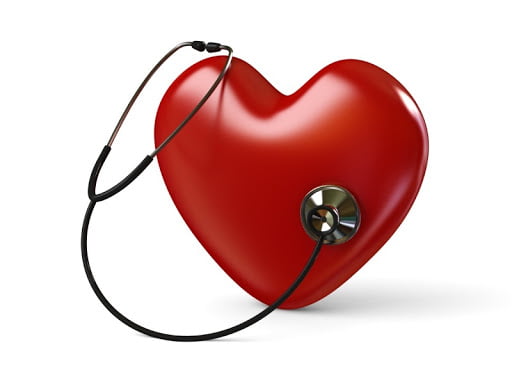
The Global Ibogaine Therapy Alliance (GITA) has a comprehensive list of potential side-effects that can arise from iboga use, which includes all of the medical conditions that can be negatively affected by the substance. They’ve confirmed that 19 deaths were associated with ingestion of iboga between 1990 and 2008, all of which were “associated with a number of pre-existing conditions and factors that include pre-existing cardiac conditions, seizures resulting from acute withdrawal from alcohol or benzodiazepines” and the use of iboga alongside other “drugs of abuse.”
If you have a heart condition, impaired kidney or liver function, certain psychological conditions, or if you’re undergoing withdrawal from a variety of substances (such as methadone, benzos, alcohol, and others) you should absolutely avoid using iboga. Some studies have found that extremely high doses of the drug may induce seizures, although in smaller doses it acts as an anti-convulsive. Iboga is a very powerful psychoactive substance that substantially affects the central nervous system. Iboga can heal, but it can also harm.
Necessary Iboga Safety Precautions

All conscientious providers of iboga therapy should exclude those with pre-existing heart conditions from treatment. Of the 19 iboga related deaths documented thus far, six were determined to have come from cardiac arrest, and in five of those cases, the deceased had been diagnosed with a heart condition. The one cardiac arrest death which occurred in a user with a healthy heart was the result of self-administration of iboga along with an unspecified “booster” which he had purchased on the internet.
There is debate on whether patients with HIV and certain psychiatric disorders can use iboga safely. The usual reason offered for the exclusion of these groups is a paucity of research into whether the substance can potentially exacerbate the symptoms of these diseases. Since there is no hard evidence that iboga therapy is harmful to patients with HIV, some treatment facilities continue to offer iboga to those suffering from the virus, but at Iboga Tree Healing House we have decided to err on the side of caution. For a full list of our inclusion and exclusion criteria, follow this link.
Mixing Iboga With Other Substances

Beginning iboga therapy while other drugs of abuse are still in your system is extremely dangerous and must be avoided. Iboga can exponentially increase the effect of opiates, so it’s necessary for safe treatment that you must go through detox before you enter treatment. The intensely reflective state, reduction of cravings, neurological effects, and sense of well-being that iboga can provide have helped many alcoholics to recover from addiction, but withdrawal from alcohol must be completed before iboga can be safely administered. It is recommended that patients suffering from alcoholism complete at least 7 days of medically supervised withdrawal, or they’ll put themselves at risk of a host of side-effects including cardiomyopathy, delirium tremens, and seizures.
It should also be noted one side-effect of iboga is that it reduces substance users to a so-called “novice state.” Therefore, following treatment your tolerance to opioids and other substances will be dramatically lowered. While all addicts enter recovery with the intention to stay sober for the rest of their lives, it’s important that they are mindful of this in the event of a relapse, as vulnerability to severe intoxication or even an overdose will be greatly increased.
Providers and Iboga Safety
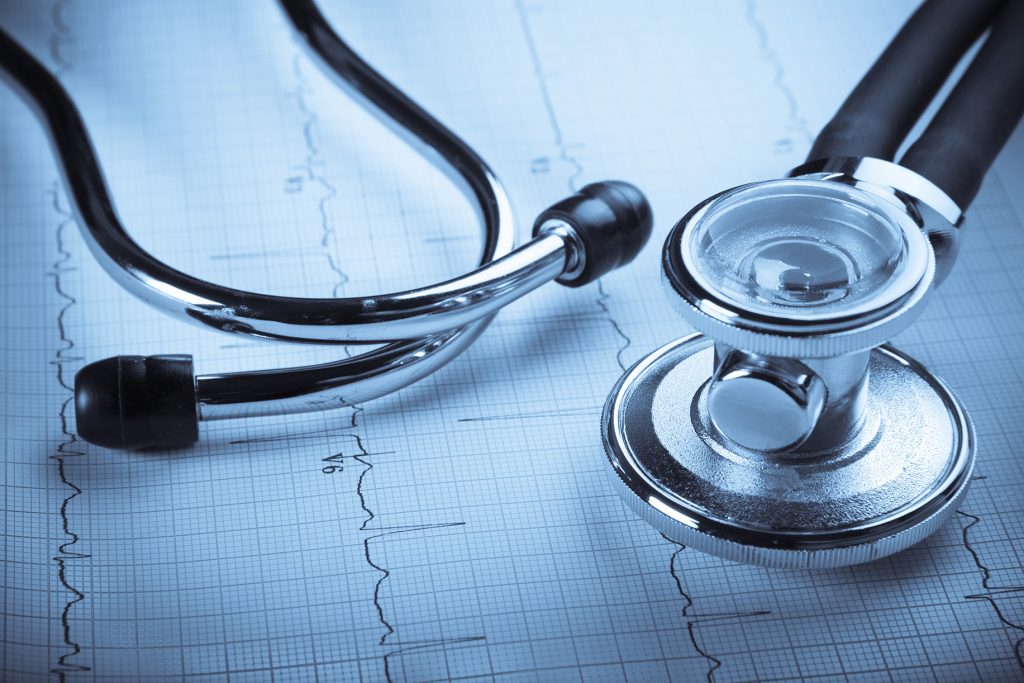
Any reputable and responsible iboga provider should be asking you for a great deal of medical information. This article offers a thorough breakdown of what a clinic needs from you to provide for your iboga safety. GITA also offers a comprehensive list of Clinical Guidelines for Iboga-Assisted Detoxification on their website. Iboga Tree Healing House takes every step possible to guarantee the safety of our patients, requiring our clients to take an EKG test, be free from stimulants (including coffee), undertake a comprehensive blood count and metabolic panel, and test liver and kidney function. We also measure levels of serum electrolytes and thyroid function for patients over 45 years old.
The most important piece of advice we can give you is this: if a clinic isn’t asking you for a detailed medical and psychiatric history and providing you with information about their emergency plan, turn around and walk away as fast as you can! This means that they’re more interested in your money than your health and iboga safety, or they are ignorant of and unconcerned with the potentially fatal harm the substance can cause when used irresponsibly.
The Good News

In spite of all of the associated risks, and even accounting for the fact that iboga is frequently used without adequate (and in some cases any) medical screening and supervision, it is still safer than methadone! 19 deaths have been temporally associated with Iboga use, and 14 of them have provided adequate post-mortem data. Of those 14, 12 cases involved either a pre-existing medical condition or the presence of other drugs of abuse in the system of the deceased. The other two occurred in settings without adequate medical supervision.
We will be the first to tell you that iboga is not completely safe, but we feel that each and every death associated with its use has been preventable and avoidable. Because we have seen its immense potential to re-build lives devastated by addiction and mental illness, we have become advocates not only for its benefits but also for providing the public with all the information we can give them about the risks and precautions necessary for using this remarkable plant. Irresponsible use can end lives. It can also keep this promising tool for fighting the opioid epidemic away from thousands of those who could reclaim their lives and health with safely administered and supervised iboga therapy.
26th September 2019 • Sticky Post
Iboga Therapy and Why It Works
A burgeoning movement is underway, pushing the benefits that so-called “plant teachers” like iboga, ayahuasca, and psilocybin can offer individuals suffering from ailments ranging from addiction to depression, PTSD, and anxiety into the mainstream. As these remarkable substances have come to the attention of notable thinkers and writers such as Tim Ferriss, Michael Pollan, and Dr. Gabor Mate, it seems like they are about to burst into the popular consciousness and finally be recognized as the powerful medicines they are, escaping the stigma of the “drug” label they’ve borne for decades. As society begins to recognize the immense potential of these plants to induce positive change, let’s take a look at how iboga treatment has helped transform thousands of lives.
Iboga Therapy For Addiction
We’ve written before about exactly how iboga therapy works for those battling addiction. Iboga therapy is particularly effective in treating opiates and opioids because it acts as an opioid antagonist. This means that the substance creates molecules which bind with opioid receptors in the central nervous system, and interact with serotonin and dopamine receptors in the brain. This causes a pronounced reduction in withdrawal symptoms and disrupts cravings for this family of drugs. It also is believed to return addicts to a “pre-addicted state,” meaning that Iboga can return your tolerance to novice user levels, and offer you a 3-6 month window where you probably won’t have a desire to use or abuse opiates or opioids.
Iboga therapy has also proved beneficial in treating a variety of other addictive behaviors. Studies have shown that iboga can similarly reduce cravings for alcohol and stimulants such as cocaine and amphetamines. It also offers the benefit of opening the addicted mind to the possibility of a dramatic lifestyle change, and offering renewed connections to one’s community and one’s true self. The aforementioned Dr. Mate recommends substances like ayahuasca and iboga for their unique abilities to help the addicted acknowledge and come to terms with past traumas that have led them into the addicted state. He notes that once we learn to cope with our psychic wounds, “we are free to connect with others without fear and reclaim the community for which addiction served as a substitution.”
While we would urge caution on those promoting iboga therapy as a miracle cure for drug addiction, we have seen first-hand what it can do. Iboga acts as an “addiction interrupter,” which frees the addict from debilitating withdrawal symptoms and cravings, and allows them a window of time to work on transforming their self-destructive thoughts and behaviors into healthy and positive patterns. Iboga isn’t a magic bullet that will destroy your addiction, but it can give you time to begin a sober life, and build the skills, support network, self-discipline, and habits that will enable you to live your best life!
Iboga therapy For Trauma and Other Psychological Disorders
In addition to its utility in fighting addiction, iboga has proven itself to be a valuable tool in treating PTSD and other psychological disorders. According to Dr. C.M. Anderson of the Harvard Medical School, “Iboga works through multiple neurotransmitter systems to create.. (a) state of plasticity similar to states of plasticity existing during fetal development. This critical brain state may facilitate the consolidation of traumatic memories, reversal of abnormal hemispheric functions, and the dissolution of habitual motor patterns associated with addiction.” In other words, the substance creates conditions in the brain which are ideal for working through the psychic pain at the root of many psychological disorders.
An iboga experience often involves a vivid and intense period of re-experiencing one’s past, followed by several hours of introspection and reflection. Many of those who’ve experienced iboga therapy find that confronting and acknowledging past trauma allows them to address the scars which have led to depression, anxiety, and trauma. Large numbers of patients who’ve undergone iboga therpay have noted that facing their demons has let them feel powerful enough to acknowledge and live with their pain, and that this realization has been a profoundly freeing experience. One user credits a visionary experience with leading him to the realization “that every emotion is as valid as any other… it was okay to have negative thoughts. That’s life. For me, trying to resist emotions just amplified them. Once I was in this state, it was beautiful—a feeling of deep contentment.”
Researchers have found that many sufferers of depression describe their affliction as first and foremost “a state of disconnection,” whether from other people, their earlier selves, their senses and feelings, their core beliefs and spiritual values, or nature. Iboga and other oneirogenics and psychedelics have demonstrated the ability to reconnect these patients to the world around them. Many liken their experiences with these remarkable plants to breaking out of a prison in which they’d been trapped.
Changing Lives and Opening Minds
Psychological disorders and addiction can both engender a sense of hopelessness. All of these afflictions create a mental atmosphere in which the idea of recovery or change appears impossible. One of the greatest benefits that iboga therapy offers is a ray of hope. Plant teachers can shake up chronically negative thought patterns, and allow the patient to see themselves in a new light: as an individual with the power to enact dramatic change in their own life. As Dr. Mate writes of Ayahuasca, “The documented unity of mind and body means that… experiential transformation… can powerfully affect the hormonal apparatus, the nervous and immune systems, and all organs such as the brain, the gut, and the heart. Hence the healing potential of the plant, seen through the lens of Western science.”
If you’re interested in experiencing the healing potential of Iboga therapy, don’t hesitate to get in touch with Iboga Tree Healing House today!
10th September 2019 • Sticky Post
Ayahuasca and Iboga: Choosing Your Treatment Path
Iboga and Ayahuasca have both shown tremendous promise in treating addiction, as well as a variety of other psychological ailments. Both plants have helped countless individuals experience healing, recovery, spiritual development, and personal growth. But although they are often lumped together, they offer fundamentally different experiences and benefits for those battling addiction. Today we’ll share our guide for choosing the right treatment for you.
The Journey
The average Iboga experience lasts for a period of 12-18 hours. It is generally described as a very intense journey through past memories and visions. Very few people who have used Ibogaine would describe their experience as pleasurable. Many liken it to having themselves shattered into thousands of pieces and then rebuilt as a stronger, healthier person. As one user describes it “I am perplexed by the state of clarity I am in while seeing the most profound stream of visual phenomena. I am also filled with a sense of awe at the potential for a life free of heroin. Emotional memories force me to deal with some of the deep subconscious guilt I have repressed for years.” Iboga has been described as a “masculine” substance, or a stern father which bluntly illustrates sources of past pain, trauma, and guilt.
Ayahuasca, on the other hand, affects the user for just 4-6 hours. It is generally described as a gentler, more pleasurable experience, even when one takes into account the fact that many users experience a dramatic bout of purging. Rather than prompting users to have a deeply personal inward journey, Ayahuasca often sends the mind outward, and many users report experiencing new perceptions of reality and experiencing connections with the natural world and even other dimensions. Ayahuasca has therefore been described as a “feminine” substance which builds connections between the user and those around them.
What Are The Benefits?
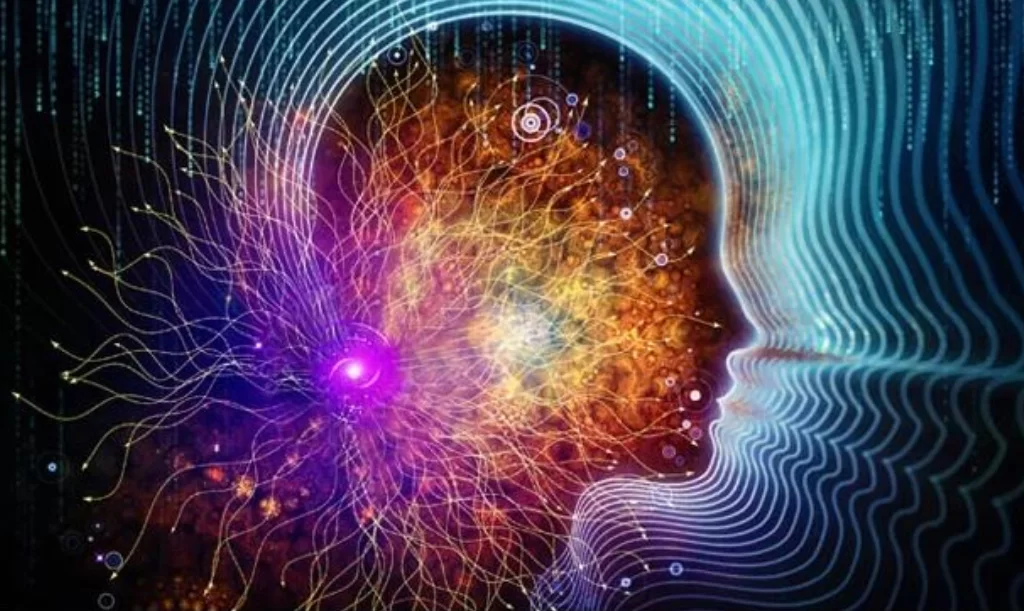
Many addicts have used these remarkable plants to overcome their affliction, but governments have been reluctant to embrace their potential to combat addiction. There is a lot more anecdotal evidence out there than there are clinical studies, but the chorus of thousands of voices shouldn’t be ignored. Both Iboga and Ayahuasca are clearly beneficial for those battling substance dependencies.
From the studies of Iboga that have been conducted, we know that it interacts with addiction in a few ways. The patient can experience visions and periods of profound introspection. Many users claim that this experience allows them to address traumatic experiences in their past, and pushes them to explore and understand their addiction while motivating them to pursue changes in their life.
Iboga also releases small proteins in the brain called “neurotrophic factors.” These proteins, according to Dr. Ignacio Carrera, “are substances that promote survival, repair and protection processes in the brain tissue.” They can change the brain’s circuitry and have been shown to restore dopamine levels and other crucial brain functions to “pre-addicted” levels. They also dramatically lessen the symptoms of withdrawal for opioids and opiates, and cravings for substances in general.
Ayahuasca, on the other hand, is generally viewed as a way to improve mood, make patients receptive to change, and deal with their emotional wounds. The influential Canadian Dr. Gabor Mate recommends Ayahuasca as an addiction treatment, noting that it can re-connect the addicted to ”inner qualities long been missing in action, such as wholeness, trust, love and a sense of possibility. People quite literally remember themselves”.A recent Psychology Today article lists the benefits of Ayahuasca as helping individuals overcome roadblocks, find personal and spiritual motivation, and acting as “a shortcut to talking therapy.”
What Are The Risks?
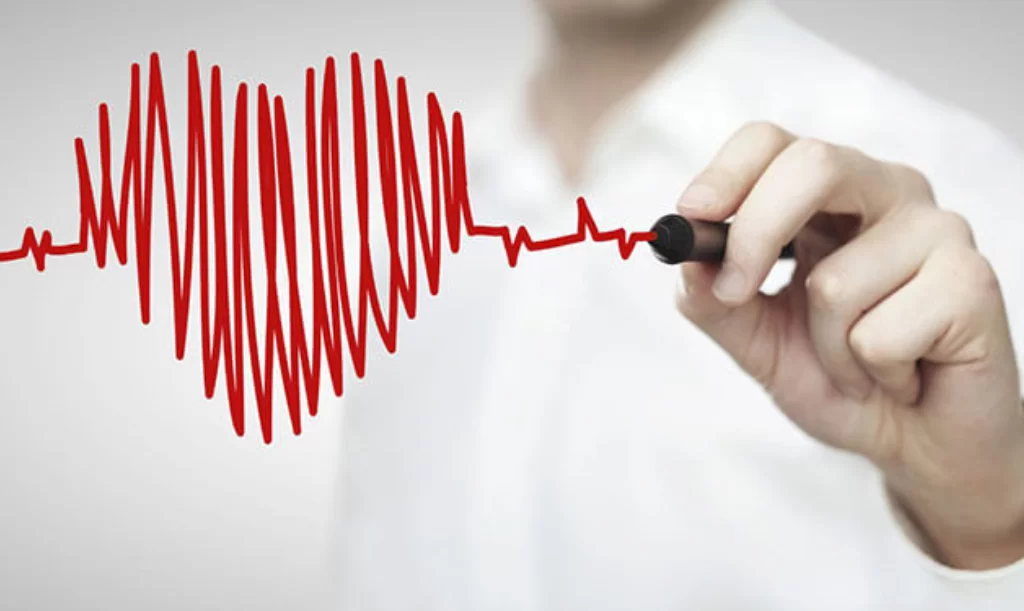
Iboga use is not without risks. There have been fatalities associated with its use, the majority of which have been related to adverse interactions with drugs already in the system of those undergoing treatment, or pre-existing heart conditions. In high doses, Iboga can also cause seizures. At Iboga Tree Healing House, we believe that every Iboga-related death was preventable, but we feel any responsible provider will subject patients to a rigorous screening process and have a detailed plan in place to respond to medical emergencies. We DO NOT recommend self-administration or choosing a treatment center that doesn’t perform blood, heart, and toxicology tests to ensure that your safety isn’t subjected to needless risks.
Ayahuasca has also been associated with fatalities. It should also be avoided if you suffer from certain heart conditions, have other substances in your system (including nicotine) or suffer from some mental illnesses. In high doses, it may increase the risk of seizures and respiratory distress, and a potentially fatal condition called “serotonin syndrome,” where extremely high levels of serotonin cause dizziness, disorientation, headache, high blood pressure, and agitation.
Continuing The Journey

Ayahuasca has shown great potential for increasing the receptivity of patients to treatment, counseling and taking on the challenge of making major changes in behavior and lifestyle. Both treatments have the ability to profoundly alter relationships between addicts and the substances they’ve become dependent on, and re-connect individuals with their true selves. But Iboga has the added benefit of dramatically reducing the symptoms of withdrawal for opiate and opioid users, as well as its effects on the central nervous system which repair and re-set the brain to its pre-addicted state.
Both of these plant teachers can be extremely beneficial to those suffering from addiction, and this is borne out by studies showing that 60-80% of Iboga users are classified are abstinent 6 months after receiving iboga addiction treatment. However, neither should be termed a “miracle cure,” and prospective patients should be wary of centers touting either substance as a sure-fire remedy for addiction. The road to recovery is long and winding, but both of these powerful natural medicines can help you on your way.
2nd September 2019
Making Recovery Last: The Importance of Iboga Aftercare
If you’ve been paying attention to the rapidly evolving world of addiction treatment, you’re probably already aware of iboga’s remarkable ability to interrupt the debilitating downward spiral of substance misuse. Iboga has allowed thousands of addicts to effectively treat their withdrawal symptoms. It re-wires neural pathways that have been warped by substance misuse, returning sufferers to a pre-addicted state. But Iboga isn’t a cure-all or a magic bullet. It interrupts addiction and allows people to enter recovery with a blank slate on which to write a brand-new life story. But in order to give that story a happy ending, addicts absolutely must dedicate themselves to iboga aftercare.
Today we’ll be taking a look at some iboga aftercare options that can help your recovery last a lifetime...
Addiction's roots
As we’ve gained a greater understanding of addiction, the idea of the “demon drug” that robs addicts of free will has fallen by the wayside. Addiction is increasingly being viewed as a response to physical and mental pain, and treatment has been evolving to address the psychological roots of the affliction. Influential thinkers like Dr. Gabor Mate and Johann Hari have inspired many to explore the traumas that allow addiction to develop and to treat the ailment with understanding and compassion. As our understanding of addiction has increased, we’ve come to realize that it isn’t an affliction that can be treated uniformly. Every recovering addict must deal with their pain and their triggers in the manner that works best for them. Finding aftercare solutions that offer you the tools you need to address, cope with, and move forward from trauma and pain is an essential step in the recovery process.
Mindfulness and Meditation
Mindfulness and meditation are two tools that we would unreservedly recommend to those in recovery. Mindfulness therapy can allow you to avoid negative and self-destructive mind-frames, and allow you to deal with cravings and emotions in a positive way. Mindfulness and meditation and Kundalini yoga have been proven to reduce levels of cortisol, a stress-related hormone, and other toxins in the body. Addiction allows those in pain to numb themselves, and a fundamental part of the recovery process is learning to live with your pain. Mindfulness therapy is an incredibly powerful tool for learning to live with and love yourself!
The CBT Difference
Like mindfulness, Cognitive Behavioral Therapy (CBT), is an effective way to explore and learn to cope with the problems at the root of addiction. Most addicts begin their downward spiral when a substance offers them powerful positive (“this drug makes me feel great”) or negative (“I need to eliminate this stress/pain”) stimuli. Over time they program themselves to unconsciously respond to feelings or situations with “automatic thoughts” or “triggers”: a certain stimulus causes an automatic desire to use a substance to bring pleasure or eliminate pain.
CBT teaches patients to identify and avoid triggers and replace unhealthy behaviors with beneficial ones. It also seeks to change belief systems and alter unhealthy and negative automatic thoughts that spur addiction. Like mindfulness, CBT promotes attention to the self and self-regulation of emotions, two mental tools that can help those in recovery recognize and deal with negative patterns of thought and behavior.
Making Connections
We’ve already written about Johann Hari and the social connection theory of addiction, as well as Dr. Bruce Alexander’s influential Rat Park study. Both are somewhat controversial, but every addiction professional will agree that connecting with others in recovery is an essential piece of the aftercare puzzle. As the SAMHSA fact sheet notes, “research indicates that active participation in any type of peer support group increases the likelihood that members will abstain from alcohol and nonprescription drugs. Furthermore, abstinence rates increase with greater group participation.” The Surgeon General has also found that “controlled studies have demonstrated benefits for consumers participating in self-help" and that "participation in self-help groups has been found to lessen feelings of isolation, increase practical knowledge, and sustain coping efforts."
There are a number of peer support organizations out there, ranging from traditional 12 Step groups to Double Trouble in Recovery for addicts suffering from co-occurring disorders, to SMART Recovery (an alternative to 12 step programs that focus on teaching the skills necessary for building a balanced life). At Iboga Tree Healing House we offer a weekly online aftercare session, which allows up to 8 former clients to meet once a week and share their experiences, trials, and triumphs. Being close to those who have shared your Iboga experience can offer the support and encouragement that everyone on this journey will need.
HALT!
Relapse is always a danger for those in recovery, no matter how careful or committed they are. In fact, many experts would argue that addiction is an affliction that lasts a lifetime and can never be “cured.” Self-care and self-awareness are a must for successful relapse prevention, and one of the simplest tools for ensuring you aren’t vulnerable to triggers is the HALT principle. HALT (asking yourself if you’re hungry, angry, lonely, or tired) allows you to recognize and deal with problematic emotions that can lead to relapse before they create significant harm. Focusing on nutrition, dealing with emotions constructively, avoiding isolation, and recharging your body and mind will allow you to deal with everyday stresses in a positive fashion and build a healthy and rewarding life for yourself.
The holistic aftercare options we offer at Iboga Tree Healing House, ranging from equine-assisted therapy to Kundalini Yoga and massage, are intended to foster the ability to deal with problematic thoughts and emotions in a positive way. Arming yourself with strategies and techniques for combating cravings and dealing with difficult situations should be a key component in your aftercare plan.
Iboga Aftercare: Staying On The Path
It’s a mistake to think of iboga therapy as a cure for what ails you. Maintaining your sobriety requires careful preparation and a lifetime’s worth of effort. But trust us, emerging from addiction as a healthy, positive, and well-adjusted individual is worth the time and effort. At Iboga Tree Healing House we work with all of our clients to create a personalized ibogaine aftercare plan that will help you to deal with the challenges that lie ahead. If you’re ready to change your life for the better, don’t hesitate to get in touch!
29th August 2019
The State of the Opioid Crisis in 2019
The opioid crisis has continued to run unabated, despite the efforts of lawmakers, treatment providers, and healthcare professionals. Americans are now more likely to die from an overdose than a car crash. And as this recent article in US News and World Report states, the opioid epidemic has become America’s “deadly new normal” with no end in sight for the current, historically high rates of addiction, overdoses, and deaths. Let’s take a look at where we stand with the opioid crisis, and how we are moving forward.
Are new regulations having an impact?

Many analysts would trace the growth of the opioid crisis to Purdue Pharma’s aggressive marketing of OxyContin as a painkiller. The drug was made for patients suffering from moderate to severe pain, but a sales force that irresponsibly downplayed the substance’s potential for abuse led many health professionals to over-prescribe the drug. As detailed in this article in the American Journal of Public Health, Purdue Pharma’s sales force was armed with research that dramatically downplayed the risk of addiction, and convinced doctors and dentists that OxyContin was an effective, low-risk option for pain management.
US News and World Report notes that a decade after the introduction of OxyContin, regulators had yet to take the spread of opioid addiction seriously. A 2011 report from The Institute of Medicine on pain relief was longer than 350 pages, yet only mentioned addiction a few times. As FDA Commissioner Dr. Scott Gottlieb has stated: “The old notion was that if you were using opioids for a legitimate purpose, you couldn’t become addicted. We now know that’s not true.”
Meanwhile, pharmaceutical companies were making massive profits by flooding small towns with millions of addictive pills. This scathing report from an American Congressional Committee, which found that distributors and the DEA “failed to abate [the] US opioid crisis,” details how pharmaceutical giant McKesson shipped 9650 hydrocodone pills per day to a pharmacy in Kermit, West Virginia, a town with a population of just 400! These shipments were 36 times above the companies own monthly dosage threshold.
The American DEA is still attempting to work out a “centralized way to analyze suspicious order reports”, but earlier this year they approved a rule change that requires drug producers to identify a legitimate need for opioids to justify their rates of production. This new regulation is an attempt to limit the supply of pills, but it’s too early to judge its effectiveness
Meanwhile, pharmaceutical companies are facing lawsuits from various levels of government across America for failing to detect and report suspicious orders of pain pills. McKesson has already paid $150 million to settle a federal complaint about negligence, and they have agreed to a multi-year suspension from sales of controlled substances in four states. Sixteen states and hundreds of cities and counties are currently suing pharmaceutical companies for the negligence and aggressive, misleading marketing campaigns that brought the crisis to its current, deadly state. As Mississippi Attorney General Mike Moore states “Should taxpayers pay to clean up the mess caused by multi-billion dollar companies who lied to sell their products, or should the companies who profited pay?”
Mounting Tragedies
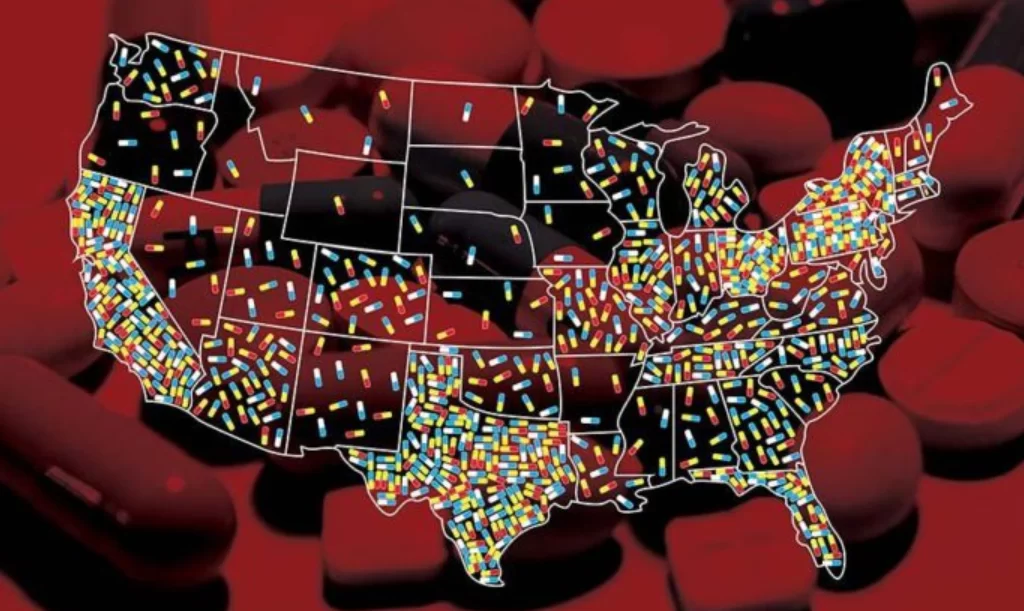
While it’s certainly a positive development that governments are taking legislative and legal action to fight the spread of addiction, it will be a while before these actions have their effect. In the meantime, those already afflicted are in increasingly dire straits. As the supply of legal pills dries up, more and more users will turn to counterfeit prescription opioids, pills that are often laced with, or made entirely from, fentanyl. The Partnership for Safe Medicines has found counterfeit pills containing fentanyl in 44 of the 50 US states, and deaths attributed to those pills have occurred in at least 26 states. In 2017 over 275 million packages flowed through the American government’s international mail facilities, and authorities estimate that 9% of them contained drugs of some kind. In a report on the situation, the FDA noted that currently only 10,000 packages are inspected each year.
Even if governments can dramatically reduce the legal supply of opioids, the opioid crisis could worsen. It’s estimated that over $800 million dollars worth of fentanyl has been shipped from China to the US in the past few years, and this is bad news for any opioid addict or anyone who cares about one. Fentanyl is 30-50 times stronger than heroin and can be lethal in doses of just 2 milligrams. As a US Attorney in Ohio has noted: “One of the truly terrifying things is the pills are pressed and dyed to look like oxycodone. If you are using oxycodone and take fentanyl not knowing it is fentanyl, that is an overdose waiting to happen. Each of those pills is a potential overdose death.”
Here's The Good News
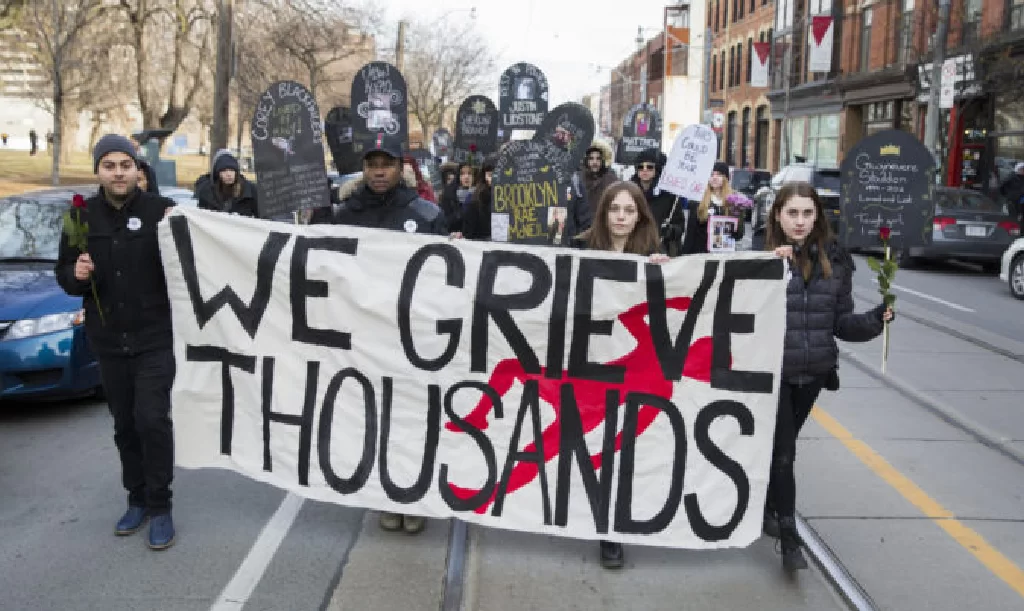
It is a positive step forward that governments, the courts, and even pharmaceutical companies are finally taking action to contain the current opioid crisis. Furthermore, Chinese Leader Xi Jinping recently pledged to declare fentanyl a controlled substance and clamp down on its production and sale. But for those already facing the nightmare of opioid addiction, that is cold comfort. The only way to stay safe is to seek treatment and build a healthy, sober life without the painkillers that are causing 130 Americans to die every single day.
And on this front, there is good news. Exciting new treatments such as iboga, suboxone, and ayahuasca are helping many addicts with the withdrawals and cravings that make getting sober so difficult. Iboga has proven to be particularly effective in treating short-action opioid withdrawals, including commonly abused substances such as codeine and oxycodone. Because these drugs leave the system quickly, the treatment can be administered during the early stages of withdrawal, where it minimizes the horrific symptoms associated with quitting “cold turkey.” Ibogaine also resets dopamine receptors in the brain to a pre-addicted state, normalizing the addicts’ ability to experience pleasure and significantly lowering their tolerance for opioids.
Addictions thought leader Dr. Gabor Maté believes that “A hurt is at the centre of all addictive behaviours. It is present in the gambler, the Internet addict, the compulsive shopper and the workaholic. The wound may not be as deep and the ache not as excruciating, and it may even be entirely hidden—but it’s there.” Addictions experts across the globe are gaining an ever greater understanding of the roots of addiction, a dis-ease which often begins as a response to mental and physical pain. Millions turned to opioids in response to chronic physical and emotional pain. But the relief that they offered was temporary, and the horrifying toll they have taken on our societies has been huge. If you’re ready to end the nightmare of opioid addiction, don’t hesitate to get in touch!
24th July 2019
Choosing an Iboga Treatment Center: 4 Key Things to Consider
You’ve probably heard about the immense potential iboga has shown for treating addiction. In case you haven’t, you can read about iboga’s uncanny ability to reduce withdrawal symptoms, minimize cravings, and reset brain function to pre-addiction levels here.
Iboga treatment is not something you should enter on a whim. In order to ensure that the treatment is right for you, that the iboga treatment center you have chosen is capable of meeting your needs, and, most importantly, that your health and safety are the paramount concerns of the people guiding you through this potentially risky treatment, you need to take the utmost care in choosing an Iboga treatment provider. Here’s our guide to choosing the right Iboga treatment facility.
1) Safety!
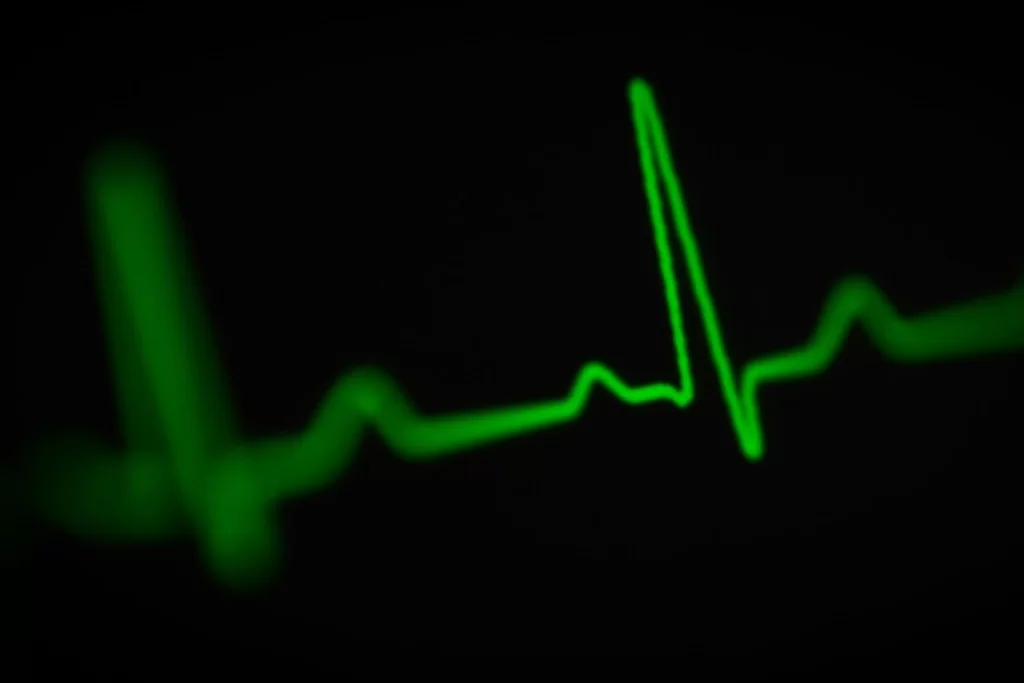
Iboga has shown immense potential, but using it comes with serious health risks. Although methadone has been proven to lead to fatalities more frequently than iboga, iboga use has indeed been fatal in some rare cases. Iboga can exacerbate pre-existing heart conditions, blood clots, kidney and liver problems, and psychological issues. However, the vast majority of iboga fatalities have resulted from self-administration and irresponsible or inexperienced treatment providers.
If you’re seriously considering iboga treatment, we would urge you to take a long look at the safety precautions employed by treatment providers. At Iboga Tree Healing House, we keep an ACLS certified medical doctor in-house, rather than a phone call or ambulance ride away. We have a one-to-one nurse to patient ratio, and we insist on a full medical history and full set of lab tests prior to treatment. We also monitor our clients with an EKG machine while they are under the influence of iboga. It is our firm belief that every iboga-related death has been preventable, and that with proper precautions, an experienced staff, and a focus on client safety, treatment facilities can eliminate all of the fatalities from iboga treatment.
2) What are your individual needs?

Every person seeking treatment is different, and every treatment center is different. Although this may seem trite, it’s a key consideration in choosing the right facility for you. Iboga is a powerful tool for overcoming addiction, but it isn’t a magic bullet or a cure-all. You will almost certainly need aftercare to overcome the issues and traumas that led you to addiction in the first place and those in your life that your affliction has caused. You’ll need to rebuild yourself and replace the toxic habits and patterns of thought and behavior addiction has entrenched with positive and healthy ones.
We offer a wide range of holistic treatments ranging from kundalini yoga and holotropic breathwork to equine therapy, and we are convinced of their effectiveness. We also recognize that they aren’t for everyone. You need to look for a facility that offers the tools you need to build a positive and healthy life. That could be a 12-Step Program, intensive psychotherapy, prolonged inpatient treatment, or something else entirely. Carefully consider your own needs, and what has and hasn’t worked in the past, before selecting a treatment center.
3) Value For Money 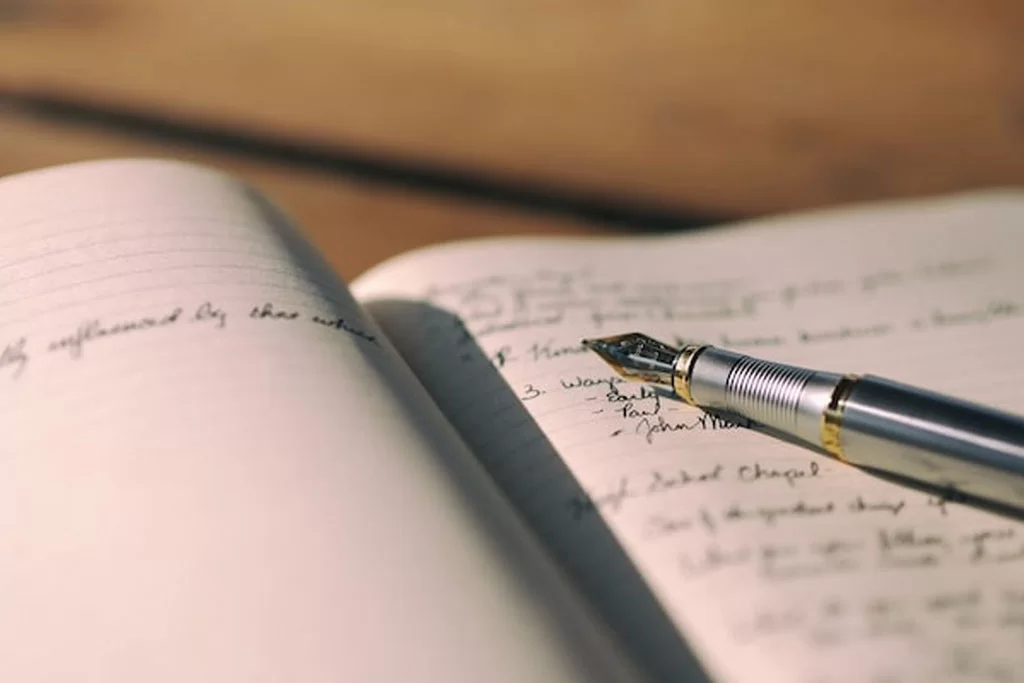
Price is obviously a concern for many seeking treatment. But your primary goal here should be to find the right treatment center for you. Addiction is expensive, and pinching pennies to stay at a facility that doesn’t meet your needs will cost more in the long run. We’d recommend deciding on the resources, length of stay, and aftercare you need first, then choosing a facility that meets your needs at a reasonable price. The cheapest options are probably cheap for a reason, and when you’re putting your health and safety into someone else’s hands, it’s wise to make sure that they aren’t cutting corners.
Another great idea if you’re looking for a cost-effective treatment center is to look at the options available abroad. With high-end treatment centers in the US and UK charging upwards of $60,000 USD a month, value-conscious consumers are gravitating towards overseas clinics. Seeking treatment abroad can allow those in recovery to get more bang for their buck in terms of accommodation, ancillary treatments, and care. It can also offer a greater degree of privacy and relaxation. You’ll be in a positive, sunny environment far away from colleagues and family members who you’d prefer to keep your struggles from. Overseas options have the added benefit of providing distance from toxic influences and environments associated with stress and substance misuse.
4) Applicable Laws
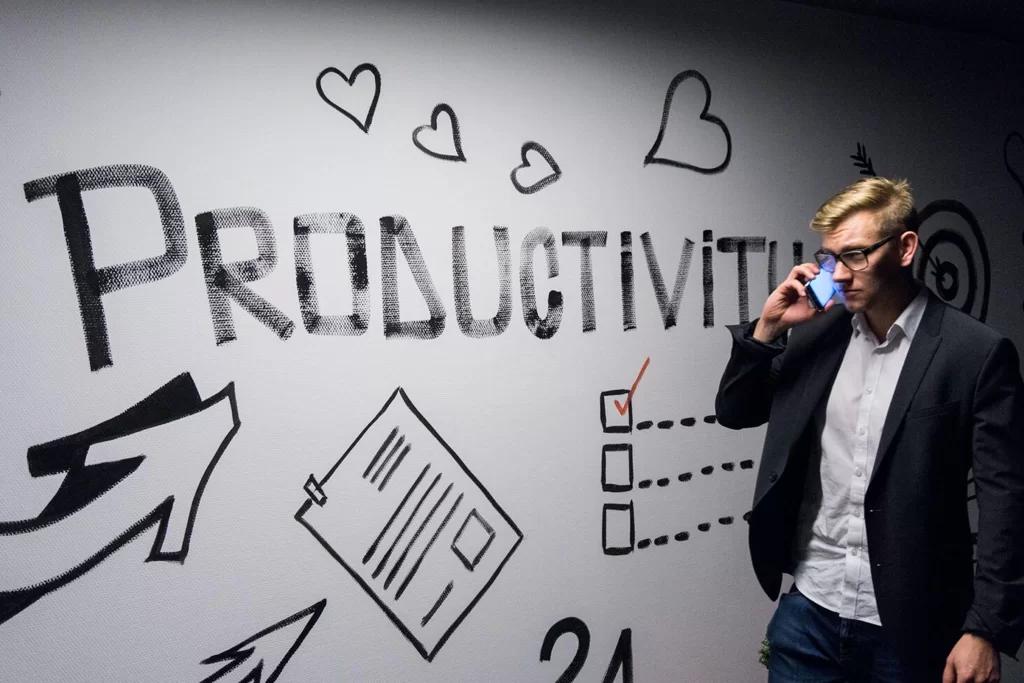
Iboga is currently illegal in the US and UK, as well as a host of other jurisdictions in the “First World.” The Global Ibogaine Therapy Alliance has a handy map which illustrates where Iboga use is legal. If you’re looking to get clean, you probably don’t want to risk possible arrest and prosecution while you are at your most vulnerable. You will also want to choose a facility that won’t hesitate to get you the medical treatment you need if something goes wrong. Portugal is an excellent choice for pursuing iboga treatment because, while the treatment has yet to be officially approved for addiction, it is not illegal or subject to regulation.
Make It Happen!
You know what to do, it’s time to get it done! Reflect carefully and honestly on your needs, and look for facilities that are capable of meeting them. Make sure that every precaution will be taken to protect your health and keep you safe. Decide whether you’d like to be close to the support of family and friends, or if you’d be more comfortable making a fresh start in a new environment. When you’ve arrived at these decisions, it’s time to embark on a new life free from the struggles of addiction!
18th July 2019
Ibogaine Risks: Keeping The Iboga Journey Safe
Iboga therapy has been rapidly increasing in popularity as an alternative to conventional addiction treatments, such as the use of methadone. Iboga’s powerful, positive effects on the symptoms of withdrawal and cravings for various drugs have changed countless lives, sending many down the path to recovery. But like many powerful substances, its use comes with a number of potential side effects and risks. While we at Iboga Tree Healing House are passionate advocates for Iboga's use in the treatment of addiction, we are equally passionate about educating prospective users about ibogaine risks and the potential dangers that go hand in hand with its benefits, and ensuring that providers and users are forewarned and forearmed against any and all potentially harmful side-effects that could occur.
The Risks

The Global Ibogaine Therapy Alliance has a laundry list of potential side-effects and ibogaine risks, as well as medical conditions that can be exacerbated by Iboga use. They report that between 1990 and 2008, 19 deaths were associated with the ingestion of Iboga, which were “associated with a number of pre-existing conditions and factors that include pre-existing cardiac conditions and seizures resulting from acute withdrawal from alcohol or benzodiazepines” as well as mixing iboga with other “drugs of abuse.”
It is recommended that people with heart conditions, impaired kidney or liver function, certain psychological conditions, and those experiencing withdrawal from a certain of substances (such as methadone, benzos, alcohol, and others) should avoid using Iboga. Some studies have found that abnormally high doses of the drug may induce seizures, although in smaller doses it acts as an anti-convulsive.
Mitigating the Risks

Any responsible provider should exclude those with pre-existing heart conditions from iboga therapy. Of the 19 Iboga-related deaths which have occurred, six were determined to have resulted from cardiac arrest, and in all but one of those cases, the deceased had a pre-existing heart condition. The one cardiac arrest death which occurred in a user with a healthy heart was the result of self-administration of Iboga along with an unspecified “booster” which he had purchased on the internet.
There is debate on whether patients with HIV and certain psychiatric disorders should use iboga. The main reason offered for excluding these groups is a lack of research into whether iboga use will exacerbate the symptoms of disease. As there is no evidence that the treatment is harmful to patients with HIV, some treatment facilities offer iboga to those suffering from the virus, but at Iboga Tree Healing House we prefer to err on the side of caution, as the data on the ibogaine health risks under these conditions is not conclusive. For a full list of our inclusion and exclusion criteria, follow this link.
Contraindicated substances

Using iboga while drugs of abuse are in your system is extremely dangerous, and must be avoided. Iboga can intensify the effects of opiates, so it’s imperative that they must be completely out of your system before you enter treatment. The intensely reflective state, reduction of cravings, neurological effects, and sense of well-being that iboga can provide have helped many recovering from addiction to alcohol, but withdrawal from this substance must be completed before iboga can be safely administered. It is recommended that patients dealing with alcoholism complete a minimum of 7 days of medically supervised withdrawal, or they risk a host of side-effects including cardiomyopathy, delirium tremens, and seizures.
It should also be noted that iboga reduces substance users to a so-called “novice state.” This means that following treatment, a users tolerance to opioids and other drugs of abuse is dramatically lowered. While addicts clearly intend to stay sober forever, it’s important that they are aware of this in the event of a relapse, as their vulnerability to overdose will be far greater.
Finding a Safe Provider

If you’re dealing with a responsible iboga provider, they will ask you for a great deal of medical information to assess your ibogaine health risks. This “Psychedelic Times” article offers a detailed breakdown of what a clinic needs from you to provide for your safety. At Iboga Tree healing House we go even further, requiring our clients to take an EKG test, be free from stimulants (including coffee), undertake a comprehensive blood count and metabolic panel, and test liver and kidney function. We also check and monitor levels of serum electrolytes and thyroid function for patients over 45 years old.
We cannot over-stress this: if a clinic doesn’t ask you for a detailed medical and psychiatric history, run! This means that either they value your money far more than they value your safety, or that they are ignorant of the significant harm iboga can do if used irresponsibly.
The Iboga Tree Healing House Difference

In spite of all of these dangers, and in spite of the fact that iboga is frequently administered without adequate (and in some cases any) medical supervision, iboga remains safer than methadone! Of the 19 deaths temporally associated with Ibogaine use, 14 have provided adequate post-mortem data. Of those 14, 12 were associated with a pre-existing medical condition or the presence of other drugs of abuse. The other two occurred in situations without adequate medical supervision.
As we’ve written before, there are certain conditions under which iboga is not completely safe, but we feel that every single death resulting from its use has been avoidable. Because we have seen its immense potential to re-shape lives at risk, we have become advocates for educating the public about its risks, as well as its benefits. Irresponsible use has the potential to end lives, as well as making this promising tool for fighting the opioid epidemic away from multitudes who could use it to regain their health and well-being.


